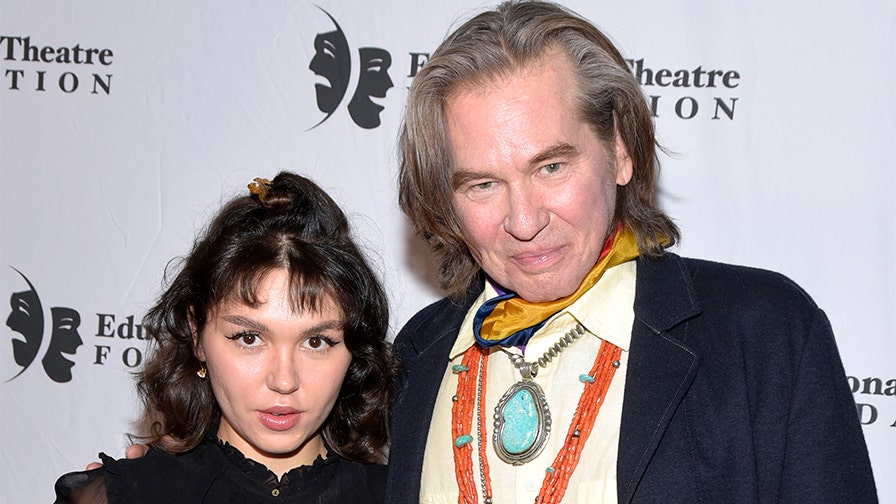When I got a callback over a year ago for the leading lady in a musical revival Billy Porter was set to direct in New York, I sang for Porter himself.
It was the second project of his I had gotten a callback for that year, having come in for the lead of a trans rom-com for his directorial debut just months before. Despite not booking that movie, getting a second callback with him unlocked an innate feeling that maybe this would be it. He could make my life better, brighter.
After my song was over, he said, “You have a beautiful voice.”
“Then give me the job,” I wanted to say, though all I did was half-bow and smile bashfully.
In the elevator on my way out, I imagined what booking that job would feel like. The mere possibility of hearing the applause of an audience sometimes feels so real that I forget what it’s like to be nameless, moving through auditions and callbacks as just another person on a director’s roster of actors chasing the social value that comes with being performative.
A dead girl pronounced dead for being a girl. Or a girl not fully living for not getting her big break.
I imagine, to be praised under the bright lights would pull me from the darkness of being ordinary, let alone the darkness of being a statistic. A dead girl pronounced dead for being a girl. Or a girl not fully living for not getting her big break.
My first singing competition my parents signed me up for was in third grade, in East Kalimantan. Before I went on, a producer of the event handed me a bouquet and told me to hand it to one of the judges during my song. Although the added theatrics of my performance was meant to leverage my chances of winning, I placed second to a girl who stood still when she sang, and I ruminated on what my placement would have been had I let my talent speak for itself.
I had just progressed from taking over karaoke nights at my family’s go-to seaport restaurant when we lived in Bali, from being too timid to get on the mic at the beginning of the nights to being greedy with it by the end, wanting encores for the encore itself. Prior to that, back in Jakarta, after big dinners with our extended family, I sang atop our grandparents’ big leather chair, my cousins squeezed into a cuddle puddle by my feet. Regardless of whether or not my family enjoyed a one-person show, their steady gaze—albeit mostly humorous to watch a seven-year-old belt Tamia’s “Officially Missing You”—prepared me for what would be a never-ending craving to be witnessed, to feeling cherished.
We left Indonesia, immigrated to the U.S., then moved out of Queens and settled upstate in New York. Being the flamboyant new kid, my peers didn’t adore me the way my cousins did. But in eighth grade, when I sang Eric Clapton’s “Tears In Heaven” for our talent show—and won—I felt a newfound respect from my classmates. I learned then, how people’s treatment of me shifted when I proved myself to have social value, be it my talent or accolades.
I stole makeup from the theater department and learned how to apply it by watching drag queens on YouTube.
I got into the advanced choir as a freshman in high school, won a solo award for our show choir competition, and was cast in the musical plays every year. At 14, I discovered RuPaul’s Drag Race, where I watched Raja Gemini, an Indonesian drag queen win her season. I stole makeup from the theater department and learned how to apply it by watching drag queens on YouTube. Eventually, I wore makeup, skirts and platform loafers to trigonometry class at 7 a.m., and what used to be a source of my peers’ interrogation as the femme kid in middle school became my source of social power as a trans person by the time I graduated. Having a sense of solidity and certainty in who I was, even if half-assed and performative, protected me from harassment.
I went to college in a small upstate town called Oneonta, the kind of predominantly white public university that was politically blue in the middle of its majority red town. With less than 7,000 students attending the school, being the sole openly trans girl, let alone a brown girl, separated me from an already small student body.
Clouded by the thrill of being seen, I took a fellow student’s wagging finger and “Yasss” as she passed me by one morning as a compliment. I took strangers’ wide smiles and nods at me as a kind gesture or an ode to my “bravery” rather than self-congratulatory tolerance of my presence. I took being on the school’s magazine cover as a celebration of diversity, and not the flimsy damage control atoning for the scrutiny I endured when using women’s restrooms— among other challenges I faced due to my visibility. For most of my college years, I moved through campus with more people knowing me than I did them.
Despite my desire to perform in front of an audience, what I initially found flattering— being well-known in school— grew into the weight of being, or at least feeling like, an institution’s mascot. I often felt like I did on that stage in East Kalimantan, adorned in flowers that weren’t for me but for offering, as if showing up empty-handed dismissed me of any credibility—as if showing up as I was didn’t quite cut it anymore.
Yazmin Vash Payne, Ty Underwood, Taja DeJesus, Lamia Beard, Shade Schuler, Ashton O’Hara, and KC Haggard were amongst the trans women of color murdered in the U.S. during my years in college. While guest hosting an MSNBC segment, writer-producer-director Janet Mock named these women in an effort to bring light to the severity of the deaths of the Black and brown trans women.
“Today we learn their stories and say their names, not out of obligation but out of recognition that these women had value, had purpose and were loved,” she said. “And they will be missed.”
Singularity made me hypervisible by default, and I took on an activist role out of fear of being without purpose.
In tandem to Mock’s statements, Laverne Cox, who had been on the rise since Orange Is The New Black, claimed a “State of Emergency” for the trans community. Just the year prior, supermodel Geena Rocero came out as trans in a TED Talk because she believed living in secrecy wouldn’t do the trans community of color justice. I moved through my early college years with an acute awareness of how violent the world often was towards trans women of color, albeit most of the murder victims were Black and rarely Asian.
In school, singularity made me hypervisible by default, and I took on an activist role out of fear of being without purpose. If I didn’t emphasize the importance of my safety in school and in the world, how was I to know my mere presence at school merited the respect and acceptance I desperately sought? If I were hurt, or worse, how was I to ensure the administration and student body did not have an excuse for forgetting or dismissing me?
The “State of Emergency” of Black and brown trans women became my talking point across several circles in school; it was the subject of my slam poetry pieces, my U.S. history class’ final paper, my independent blog, even my open mic performances. As there was an urgency to the way I politicized being a brown trans teenager in college, there was an urgency to the way I politicized glamor, too.
In order to not feel like I was a ticking statistic, and therefore pitied, I relied, yet again, on performance. Beauty allowed me to get through school with a sense of being “above” the looming tragedy of my community, even though tragedy and my fear were already the underbelly of my academic career.
I want to know where to exist between the zenith of applause and funeral.
At Oneonta, I modeled myself after glamorous trans women, squeezing myself into cisnormative conventions of beauty to compensate for what often felt like my grim reality: I was not cis. My access to normal college experiences fell short in comparison to other girls at school because I was not cis, and even more so because I was not white. My only option, I felt, was to out-pretty the girls on campus. I’ll be respected and desired, I thought, and maybe the illusion of being just like them will make me happy. Besides who else was I to turn to if not the beautiful and successful trans women I saw in the media, like Geena, Laverne, and Janet?
Between having a strategic knowledge of makeup and owning a hyperfeminine wardrobe, I was acutely aware of how performative gender was for me. Despite being an out trans girl in college, I hoped to only stand out for being beautiful. I was flattered when strangers started to buy me drinks at the bar or held doors open for me, and I progressively craved the feeling more. I wanted to keep chasing the high of the benefits hyperfemininity gifted me, but that too became exhausting; even being glamorous required me to excel.
While the work of popular and beautiful trans women emboldens me, it seems as though I have no option but to be fabulous—and notably so—in order to feel secure as a marginalized person. I don’t want to be remembered by a news headline where I have been killed, but can I only rely on the world to keep me safe if I am memorable and beautiful beyond belief?
Before I transitioned, I wanted to be seen simply because of my artistic contributions. Once I understood what being trans in the U.S. meant, I wanted to be seen because of my artistic contributions in spite of what women like me continue to endure. My shortcoming was, and sometimes still is, my belief that fame and glamor can save me.
There are many trans women of color to idolize; There are also many trans women of color to mourn. I feel inspired by the former, terrified by the latter. I want to know where to exist between the zenith of applause and funeral. I am grateful for trans celebrities because they serve as a mirror for me, and I am humbled by the victims of anti-trans violence because they remind me of what I have to lose.
I grieve the girls who dreamt of blooming when all the world could offer was another headline. I mourn with the girls who go to bed under stars in the names of their lost sisters.
Sometimes I wonder if getting out of bed and brushing my teeth in the morning would be easier if I had an Academy Award-sized audience cheering for me. Sometimes I find the mundane tasks of my everyday life to be excruciatingly tedious and dull.
But maybe that’s the gap between glamor and death for trans women of color; a little life teetering on the edge of phenomenon and the ordinary, chasing miracles in the getting-by and finding stillness in the wonders.
This essay, by DENNY, is the fourth in Electric Literature’s new series, Both/And, centering the voices of transgender and gender nonconforming writers of color. These essays publish every Thursday all the way through June for Pride Month. To learn more about the series and to read previous installments, click here.
—Denne Michele Norris















































![Ryan Seacrest’s Final Episode of ‘Live’ Recap [VIDEO] Ryan Seacrest’s Final Episode of ‘Live’ Recap [VIDEO]](https://tvline.com/wp-content/uploads/2023/04/live-with-kelly-and-ryan-finale.jpg?w=620)








